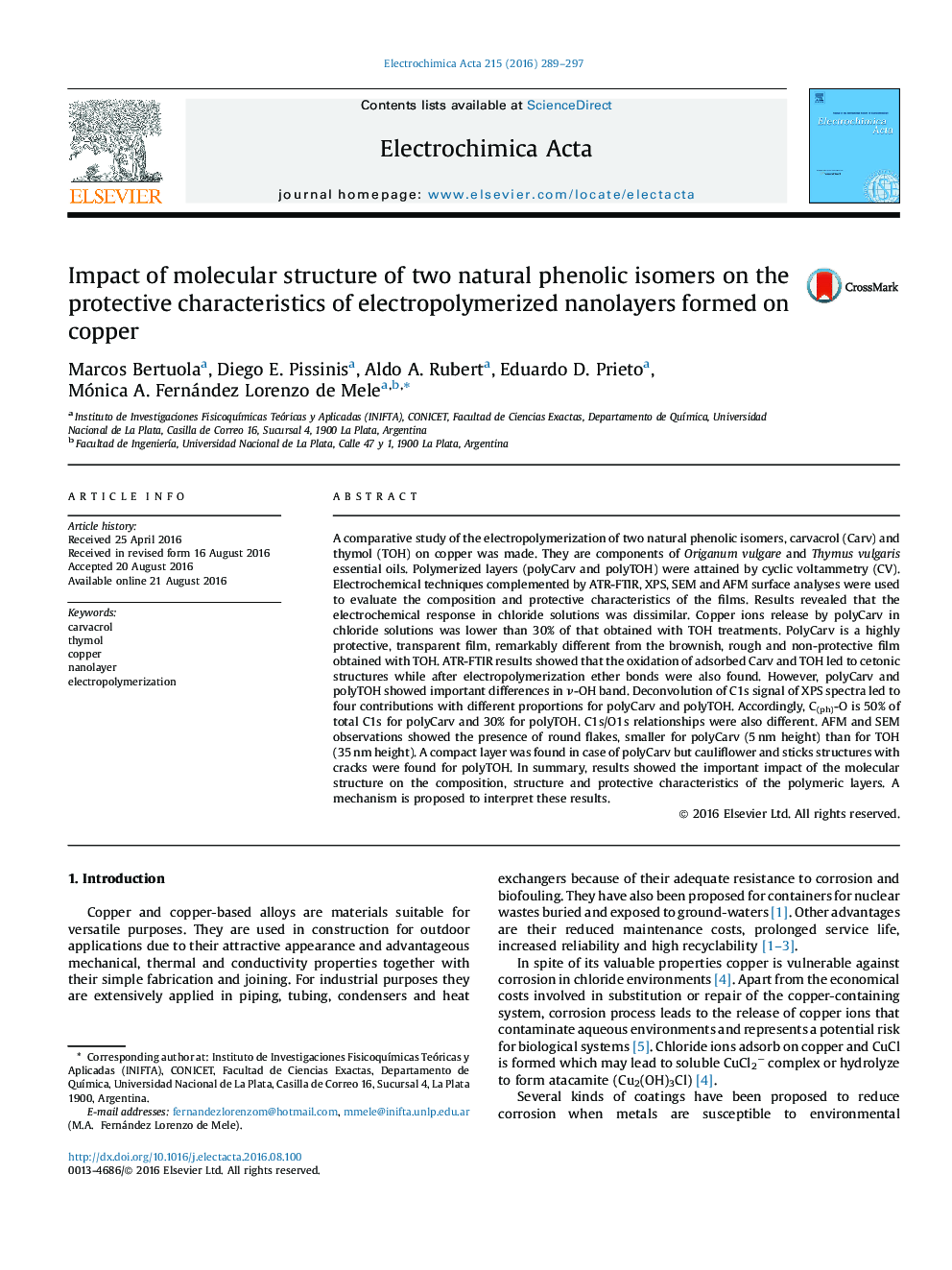| Article ID | Journal | Published Year | Pages | File Type |
|---|---|---|---|---|
| 6473142 | Electrochimica Acta | 2016 | 9 Pages |
â¢Electropolymerized layers of Carvacrol (Carv) and Thymol (TOH) were formed on Cu.â¢FTIR analysis showed the presence of cetonic and ether structures within the layers.â¢Composition, structure and protective characteristics of the layers were quite different.â¢PolyCarv layer was transparent and more protective against corrosion than polyTOH.â¢A high impact of molecular structure on the characteristics of the layers was found.
A comparative study of the electropolymerization of two natural phenolic isomers, carvacrol (Carv) and thymol (TOH) on copper was made. They are components of Origanum vulgare and Thymus vulgaris essential oils. Polymerized layers (polyCarv and polyTOH) were attained by cyclic voltammetry (CV). Electrochemical techniques complemented by ATR-FTIR, XPS, SEM and AFM surface analyses were used to evaluate the composition and protective characteristics of the films. Results revealed that the electrochemical response in chloride solutions was dissimilar. Copper ions release by polyCarv in chloride solutions was lower than 30% of that obtained with TOH treatments. PolyCarv is a highly protective, transparent film, remarkably different from the brownish, rough and non-protective film obtained with TOH. ATR-FTIR results showed that the oxidation of adsorbed Carv and TOH led to cetonic structures while after electropolymerization ether bonds were also found. However, polyCarv and polyTOH showed important differences in ν-OH band. Deconvolution of C1s signal of XPS spectra led to four contributions with different proportions for polyCarv and polyTOH. Accordingly, C(ph)-O is 50% of total C1s for polyCarv and 30% for polyTOH. C1s/O1s relationships were also different. AFM and SEM observations showed the presence of round flakes, smaller for polyCarv (5 nm height) than for TOH (35 nm height). A compact layer was found in case of polyCarv but cauliflower and sticks structures with cracks were found for polyTOH. In summary, results showed the important impact of the molecular structure on the composition, structure and protective characteristics of the polymeric layers. A mechanism is proposed to interpret these results.
Graphical abstractDownload high-res image (338KB)Download full-size image
